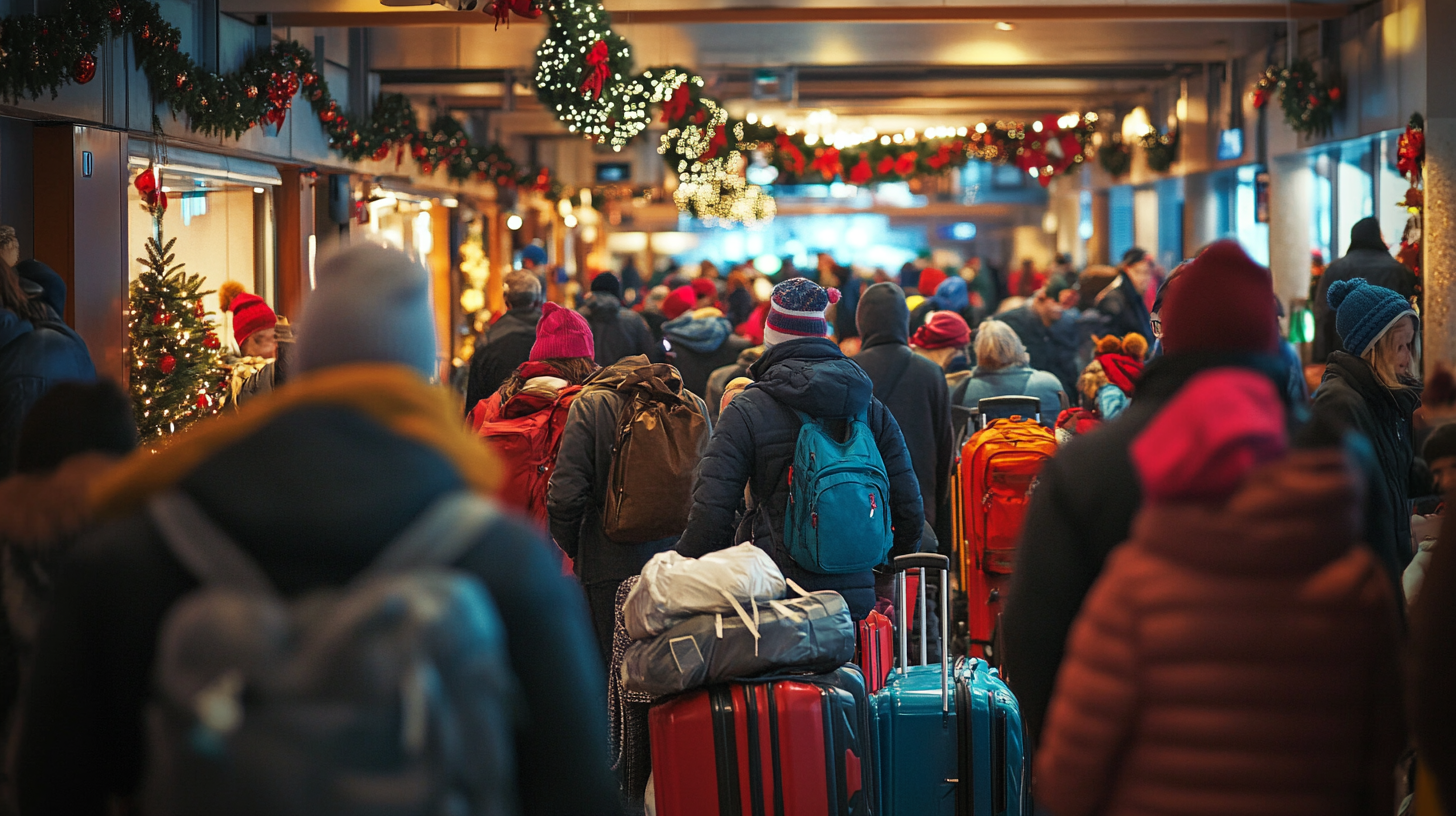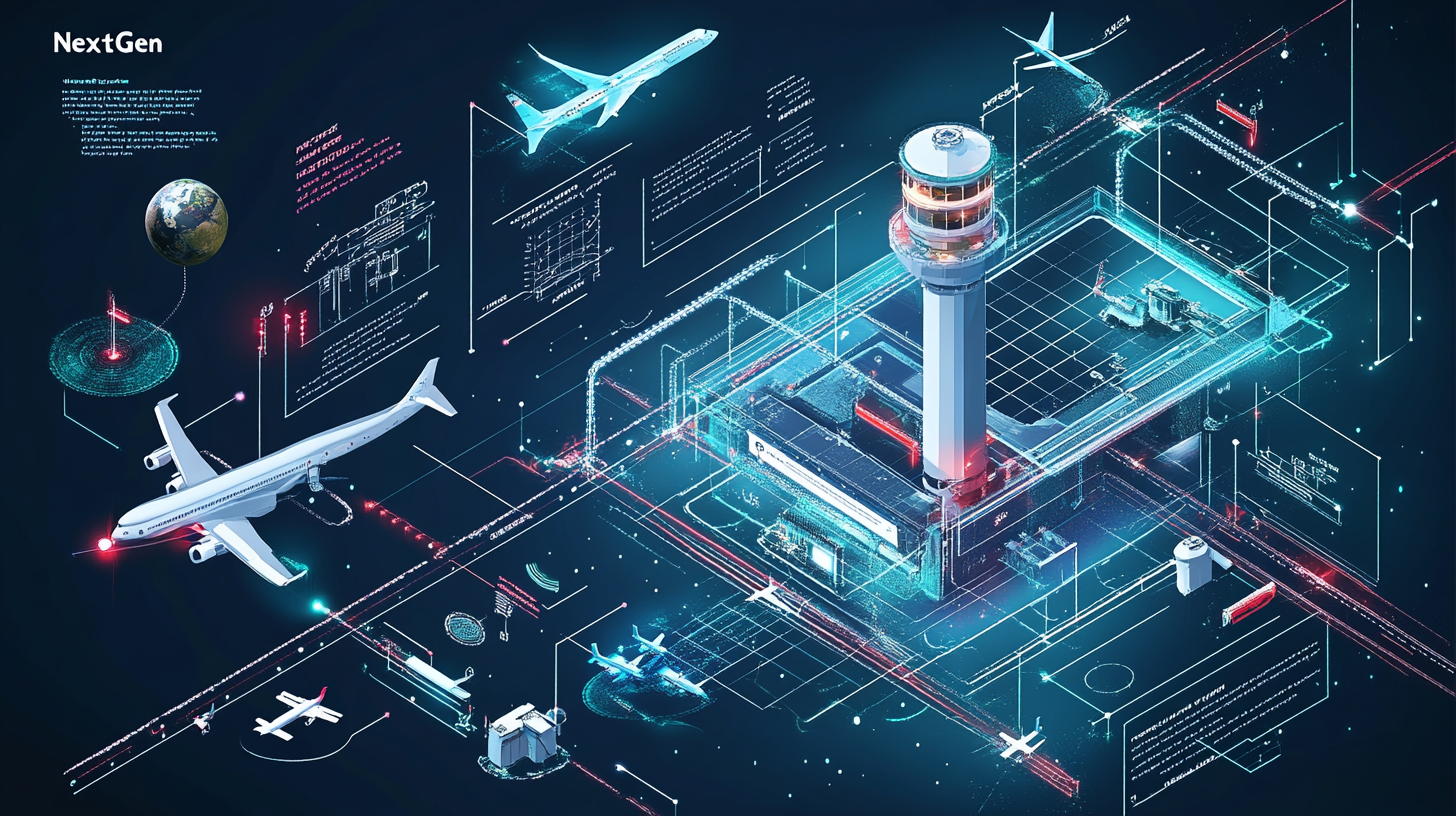
The FAA’s Holiday Mission: Ensuring Safe and Smooth Flights for Millions

The holiday season is upon us—a magical time when families reunite, friends gather, and millions embark on journeys to create cherished memories. Airports bustle with excitement and anticipation as travelers navigate through terminals adorned with festive lights and holiday cheer. Yet, behind the scenes of this joyous time lies an intricate operation orchestrated to perfection. The Federal Aviation Administration (FAA), the backbone of the nation’s air travel system, steps up its efforts to ensure that every flight not only arrives on time but does so with the utmost safety. Managing increased air traffic, dealing with unpredictable winter weather read more about winter weather flying at National Weather Service, and coordinating among countless stakeholders is no small feat. In this comprehensive guide, we’ll delve into the meticulous planning, advanced technology, and dedicated professionals that enable the FAA to keep the skies safe during the holiday rush.
The Surge in Holiday Air Travel

The period between Thanksgiving and New Year’s Day is often referred to as the “Super Bowl” of air travel. According to industry statistics from Upgraded Points, more than 50 million passengers take to the skies during this time, marking a substantial increase compared to the rest of the year. Airports swell with travelers laden with gifts and luggage Packing Efficiency Tips from Condé Nast Traveler, while airlines schedule additional flights and deploy larger aircraft to accommodate the surge in demand.
This dramatic uptick presents significant challenges. The skies become more crowded, as noted in the FAA Daily Air Traffic Report, airport terminals reach capacity, and the risk of delays and disruptions escalates. The FAA, anticipating these seasonal patterns, implements a series of strategic measures designed to mitigate these challenges and ensure a seamless travel experience.
One key strategy involves close coordination with airlines. Visit Google Flights to see how the FAA works hand-in-hand with carriers to optimize flight schedules, staggering departures and arrivals to minimize potential congestion. By analyzing historical data and utilizing predictive models in aviation from Springer, they can forecast peak times and adjust accordingly.
Additionally, the FAA boosts staffing levels at critical Air Traffic Control Centers. Experienced controllers are scheduled during peak hours, and additional support staff are brought in to handle the increased workload. This not only ensures that there are enough eyes monitoring the skies but also that there is sufficient capacity to deal with unexpected situations.
Advanced technology plays a crucial role as well. The FAA employs sophisticated Air Traffic Management Systems that provide real-time data on aircraft positions, weather conditions, and potential conflicts. These tools allow controllers to make informed decisions quickly, optimizing flight paths and reducing delays.
The Vital Role of Air Traffic Control in Ensuring Safety

In the complex world of aviation, Air Traffic Controllers serve as the guardians of the skies. Their role is critical, coordinating the movement of thousands of aircraft to prevent collisions, organize and expedite the flow of air traffic, and provide information and support for pilots. During the holidays, their responsibilities become even more demanding as they manage the increased volume with precision and poise.
Air traffic controllers undergo extensive training to prepare for the challenges of their role. The FAA ensures that these professionals are equipped with the latest knowledge and skills, including the use of advanced radar systems and communication protocols. To learn more visit the FAA’s guide to aviation communication protocols and ATC simulations at ATC-SIM.
During peak travel periods, the FAA implements strategic staffing initiatives. Controllers are scheduled to match the demand, with additional personnel available to handle unexpected increases in traffic or Simple Flying’s guide to flight diversions. Fatigue management is a top priority; the FAA enforces strict work-hour limitations and provides adequate rest periods to ensure controllers remain alert and effective.
Communication is the cornerstone of air traffic control. Controllers use precise, standardized phraseology to minimize misunderstandings. With the integration of new technologies like Data Comm as discussed by Skybrary, a digital communication system, controllers and pilots can exchange information more efficiently, further reducing the risk of errors.
Moreover, the FAA fosters a culture of continuous improvement. Regular training sessions, simulations, and performance assessments help controllers refine their skills and stay updated on the latest developments. By investing in their workforce, the FAA ensures that the people responsible for guiding aircraft are always at the top of their game.
Leveraging Cutting-Edge Technology to Enhance Safety

Technology is the backbone of modern aviation, and the FAA’s commitment to innovation has revolutionized air travel. One of the most significant advancements is the implementation of the Next Generation Air Transportation System, or NextGen—a comprehensive overhaul of the National Airspace System. This initiative incorporates a suite of technologies designed to make flying safer, more efficient, and more predictable.
A key component of NextGen is Automatic Dependent Surveillance-Broadcast (ADS-B), which allows for more accurate tracking of aircraft positions using satellite navigation. Unlike traditional radar, ADS-B provides real-time data to both controllers and pilots, enabling more precise aircraft spacing and efficient routing. This technology is particularly beneficial during high-traffic periods like the holidays, as it helps reduce delays and fuel consumption.
Another innovation is Performance-Based Navigation (PBN), which utilizes advanced onboard systems to allow aircraft to fly more direct routes and curved paths. PBN enhances safety by improving the accuracy and reliability of navigation, reducing the likelihood of errors associated with traditional ground-based navigation aids.
The FAA has also invested in System Wide Information Management (SWIM), which supports real-time information exchange, including weather data, flight plans, and airport status, allowing for better decision-making and coordination.
In the realm of communication, technologies like Controller-Pilot Data Link Communications (CPDLC) enable text-based messaging between controllers and pilots. This supplements voice communication and reduces frequency congestion, especially during busy periods. It also provides a clear record of instructions, minimizing the risk of miscommunication.
Simulation and predictive analytics are also part of the FAA’s technological arsenal. By modeling various traffic scenarios and potential disruptions, the FAA can proactively adjust strategies to maintain smooth operations. For example, if simulations indicate possible bottlenecks at certain airports, the FAA can coordinate with airlines to adjust flight schedules or reroute traffic as necessary.
Seamless Collaboration with Airlines and Airports

The FAA’s mission to ensure safe and efficient air travel is a collaborative effort. Airlines, airports, and other aviation partners work closely with the FAA to coordinate operations, share information, and address challenges proactively.
Regular stakeholder meetings are held to align strategies. During these sessions, airlines provide detailed flight schedules, anticipated passenger loads, and any planned operational changes. This information is crucial for the FAA to develop air traffic management plans that accommodate the needs of carriers while maintaining safety. Visit IATA’s event page for more details on these meetings.
The FAA also shares vital information with airlines and airports. Updates on airspace restrictions, temporary flight restrictions (TFRs), and weather advisories are disseminated promptly. This ensures that all parties have access to the latest data, enabling them to adjust plans as needed.
At the airport level, the FAA works with airport operators to optimize ground operations. This includes coordinating gate assignments, runway usage, and taxiway routes. Through effective airport gate management systems, the FAA and airports can reduce ground delays and improve overall efficiency.
Emergency preparedness is a critical aspect of this collaboration. The FAA, airlines, and airports jointly develop and regularly test contingency plans. Whether dealing with severe weather events, security incidents, or system outages, these plans ensure a coordinated response that prioritizes safety and minimizes the impact on passengers.
Moreover, the FAA engages with international aviation organizations to address cross-border operations. During the holidays, many flights involve international destinations, requiring coordination with foreign air navigation service providers. By maintaining open lines of communication, the FAA supports the seamless flow of international air traffic.
Enhancing Passenger Awareness and Providing Support

While much of the FAA’s work happens behind the scenes, the agency recognizes the importance of engaging with passengers. Visit the International Airport Review for more on the passenger experience. By keeping travelers informed and prepared, the FAA contributes to a smoother, more enjoyable journey for all.
The FAA’s website and social media channels serve as valuable resources. They provide real-time updates on flight delays, weather forecasts affecting air travel, and security procedures. Travelers can access tips on navigating airports during peak times, understanding baggage regulations, and even how to pack safely at Condé Nast Traveler (e.g., how to transport gifts without violating security rules).
Travelers are also encouraged to make use of flight tracking apps and airline mobile applications to receive real-time updates and notifications. Products like Flightradar24 and airline-specific apps such as Delta’s Fly Delta App or United’s United App provide valuable information that can help passengers stay informed and adjust to any changes promptly.
The FAA also collaborates with organizations like the Transportation Security Administration (TSA) to streamline the passenger screening process. By disseminating information on what items are allowed in carry-on and checked baggage, the FAA helps reduce wait times at security checkpoints.
In addition, the FAA supports initiatives aimed at improving accessibility for passengers with disabilities or special needs. Guidelines and assistance programs are promoted to ensure that all travelers receive the necessary support during their journey.
Recognizing the growing concern over passenger rights, the FAA works with airlines to address issues such as overbooking, tarmac delays, and lost or damaged baggage. While enforcement of these regulations primarily falls under the Department of Transportation (DOT), the FAA’s oversight helps ensure compliance and promotes fair treatment for passengers. For detailed information, consult the Fly Rights guide from the US Department of Transportation.
Lastly, the FAA encourages passengers to be proactive in their travel plans. Advisories urge travelers to check weather conditions, confirm flight statuses, and arrive at the airport early. For further travel tips, check out the Travel Planning Checklist at Gather & Go Travel. By fostering a partnership with the flying public, the FAA helps make holiday travel a more pleasant experience for everyone involved.
Ensuring Safe Skies During the Holiday Rush

The holiday season symbolizes togetherness and celebration, and the FAA’s unwavering commitment ensures that these moments are possible for millions of travelers. Through meticulous planning, embracing innovative technologies, and fostering robust partnerships across the aviation industry, the FAA orchestrates a complex symphony that keeps the nation’s airspace operating smoothly.
Whether you’re a seasoned traveler or embarking on a rare journey to see loved ones, understanding the efforts that go into making your flight safe and efficient adds an appreciated perspective. From the air traffic controllers guiding planes with precision, to the engineers developing next-generation systems, to the collaborative efforts with airlines and airports, every component plays a vital role.
As you gaze out the plane window at the sprawling expanse below, take comfort in knowing that a dedicated team is working 24/7 as highlighted by the FAA to get you to your destination safely. The FAA’s mission transcends beyond operational efficiency; it is about connecting people, facilitating commerce, and upholding the highest aviation safety standards that make air travel one of the safest modes of transportation.
So, as you embark on your holiday travels, remember to plan ahead, stay informed, and perhaps take a moment to appreciate the intricate system that makes it all possible.
For more insights, travel tips, and the latest aviation news, visit us at BoardingArea!
Safe travels, and happy holidays!































